Breakfast is often called the most important meal of the day, but what happens when common staples like eggs and gluten are off the menu? For many people, dietary restrictions due to allergies, intolerances, or personal choices can make breakfast planning feel like solving a puzzle. Eggs and gluten appear in so many classic dishes—from fluffy pancakes to hearty breakfast sandwiches—that finding alternatives may seem overwhelming.
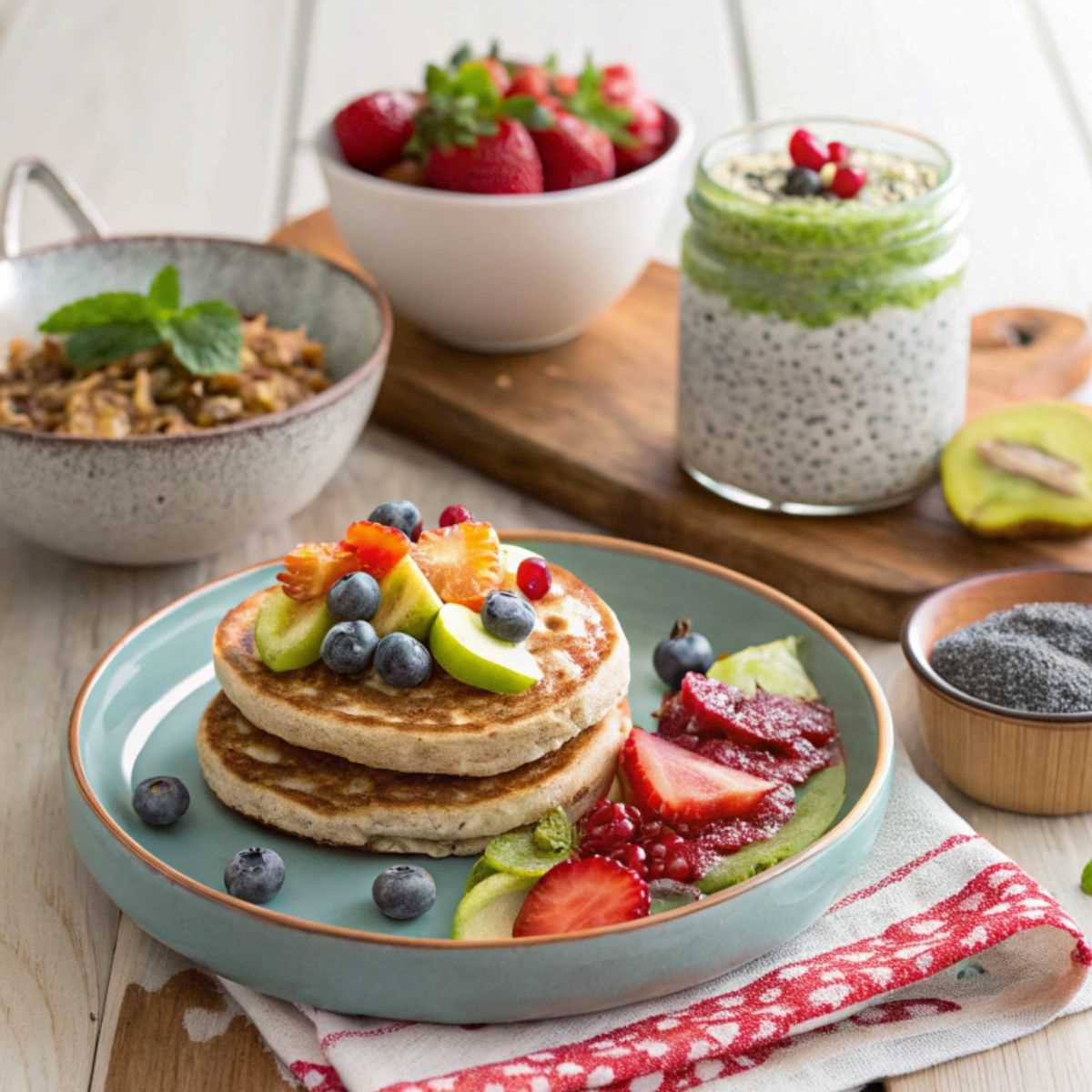
But don’t worry! Whether you’re living with celiac disease, an egg allergy, or simply looking for new options, you’ve come to the right place. This article is packed with delicious and nutritious ideas to keep your mornings bright and satisfying—without relying on eggs or gluten. From sweet treats to savory favorites, there’s something here for everyone.
Understanding Gluten and Egg Intolerances
What is Gluten Intolerance?
Gluten is a protein found in wheat, barley, and rye. For people with celiac disease or gluten sensitivity, consuming gluten can cause a range of uncomfortable symptoms, including bloating, abdominal pain, fatigue, and skin rashes. In severe cases, gluten can damage the small intestine, leading to nutrient malabsorption. Avoiding gluten isn’t just a lifestyle choice for these individuals—it’s necessary.
What is Egg Intolerance?
Egg intolerance is different from an allergy. While an allergy triggers a potentially life-threatening immune response, intolerance usually leads to digestive issues like bloating, cramps, or diarrhea. Many people with egg intolerance may also avoid eggs for ethical or dietary reasons, such as following a vegan lifestyle.
Why Gluten-Free and Egg-Free Diets Can Be Challenging
Breakfast foods contain gluten (think toast, bagels, or pastries) and eggs (scrambled, fried, or used as a binding agent). Removing both ingredients from your diet might initially feel restrictive, but it can lead to discovering creative and wholesome alternatives.
Benefits of Adopting Gluten-Free and Egg-Free Breakfasts
- Healthier Ingredients: Many egg-free and gluten-free recipes emphasize whole foods like fruits, vegetables, and nuts.
- Reduced Inflammation: Eliminating common allergens can reduce inflammation, improving overall well-being.
- Creative Cooking Opportunities: You’ll discover new ingredients and techniques to elevate your culinary skills.
If you're asking, What can I eat for breakfast if I can't eat eggs or gluten? it’s helpful to start with the basics. Learn What is a Gluten-Free Breakfast Item? to better understand your options and how to adapt your meals.
Key Ingredients for Gluten-Free and Egg-Free Breakfasts
A delicious gluten-free and egg-free breakfast starts with choosing the right ingredients. These versatile staples replace traditional options and add nutrients to your meals.
A great gluten-free breakfast starts with quality ingredients. If you love baking, this Gluten-Free Bread Recipe: Soft, Delicious, and Easy to Make is perfect for pairing with spreads or avocado.
1. Egg Substitutes for Breakfast and Baking
If you can’t eat eggs, there are plenty of substitutes that work well in both recipes and standalone dishes:
- Flaxseed Meal: Mix 1 tablespoon of ground flaxseed with 3 tablespoons of water to create a “flax egg.” This recipe is perfect for pancakes, muffins, or binding savory dishes.
- Chia Seeds: Like flaxseeds, chia seeds can be mixed with water to form a gel-like consistency.
- Applesauce or Mashed Banana: Ideal for adding moisture and natural sweetness to baked goods like muffins or waffles.
- Tofu: Silken tofu works well in smoothies, while firm tofu can be scrambled to mimic scrambled eggs.
2. Gluten-Free Grains and Flour
Gluten-free doesn’t mean flavor-free! There’s a wide variety of grains and flours that provide texture, nutrition, and versatility:
- Oats: Choose certified gluten-free oats for breakfast bowls or baked oatmeal.
- Quinoa is a protein-rich seed that cooks quickly and pairs well with sweet and savory toppings.
- Almond Flour: A fantastic option for pancakes, muffins, and cookies with a nutty flavor.
- Coconut Flour: Highly absorbent and great for baking when combined with other gluten-free flours.
3. Protein-Packed Ingredients
To ensure your breakfasts are satisfying and balanced, incorporate these protein-rich foods:
- Nut Butter: Almond, peanut, or sunflower butter are excellent spreads or smoothie add-ins.
- Plant-Based Yogurt: Choose dairy-free coconut, almond, or cashew milk yogurts.
- Legumes: Chickpeas and lentils can be used in savory breakfast bowls.
- Pumpkin, sunflower, and hemp seeds add crunch and protein to cereals or smoothie bowls.
4. Flavor Enhancers
Add bold flavors and natural sweetness with these:
- Fresh and Dried Fruits: Berries, bananas, and dried figs make excellent toppings.
- Spices: Cinnamon, nutmeg, and vanilla extract can enhance the taste of pancakes, smoothies, and more.
- Non-Dairy Milk Alternatives: Almond, soy, oat, or coconut milk offers creamy textures for cooking and beverages.
5. Gluten-free breads and Wraps
Keep gluten-free bread, wraps, or tortillas on hand for quick breakfasts. Look for options made with brown rice, sorghum, or chickpea flour.
Need a versatile base for wraps or tacos? Check out these Gluten-Free Tortillas: Easy Homemade Recipes & Store-Bought Picks for quick and satisfying breakfasts.
Gluten-Free and Egg-Free Breakfast Ideas
Sweet Breakfast Options
1. Gluten-free pancakes and Waffles
Pancakes and waffles are breakfast classics that can easily be adapted for gluten-free and egg-free diets.
- How to Make Them: Use a blend of gluten-free flour (almond or oat flour) and an egg substitute, such as a flaxseed meal or applesauce. Add non-dairy milk, a touch of vanilla, and a natural sweetener like maple syrup.
- Recipe Example: Banana-Oat Pancakes
- Ingredients: Gluten-free oats, ripe bananas, flaxseed “egg,” non-dairy milk, cinnamon.
- Instructions: Blend ingredients into a smooth batter, then cook on a griddle. Serve with fresh fruit and a drizzle of maple syrup.
For those who enjoy sourdough, you might wonder, Is Any Sourdough Bread Gluten-Free? The Truth and Safe Options. This guide can help you discover safe options that fit your breakfast routine.
2. Smoothie Bowls
Smoothie bowls are a nutrient-packed way to start your day and can be endlessly customized.
- Ingredients: Blend frozen fruits (e.g., mango, berries, or banana) with non-dairy milk or yogurt. Top with gluten-free granola, coconut flakes, and seeds.
- Recipe Example: Tropical Smoothie Bowl
- Base: Blend frozen pineapple, mango, banana, and coconut milk.
- Toppings: Add chia seeds, gluten-free granola, and sliced kiwi.
3. Chia Pudding
Chia seeds are a superfood that transforms into a creamy pudding when soaked.
- How to Make It: Mix 3 tablespoons of chia seeds with 1 cup of non-dairy milk. Sweeten with maple syrup or agave, and let it sit in the fridge overnight.
- Recipe Example: Chocolate Almond Chia Pudding
- Add cocoa powder and almond butter for a rich, dessert-like breakfast. Top with sliced bananas and a sprinkle of cacao nibs.
4. Gluten-Free Breakfast Muffins
Bake a batch of gluten-free muffins for a grab-and-go breakfast.
- Base Recipe: Combine gluten-free flour, mashed banana or applesauce, non-dairy milk, and baking powder. Add mix-ins like blueberries, nuts, or chocolate chips.
- Tip: Freeze leftovers to reheat later for a quick meal.
Savory Breakfast Options
1. Avocado Toast on Gluten-Free Bread
Avocado toast is a quick, satisfying breakfast loaded with healthy fats.
- How to Make It: Use toasted gluten-free bread as the base. Mash ripe avocado, season with salt, pepper, and lemon juice, and spread it on top.
- Toppings for Variety: Add sliced tomatoes, microgreens, or a sprinkle of hemp seeds for extra nutrition.
2. Breakfast Burritos
Breakfast burritos are highly customizable and can be made gluten-free and egg-free.
- Ingredients: Use gluten-free wraps filled with scrambled tofu or seasoned chickpeas, sautéed veggies, and dairy-free cheese.
- Recipe Example: Southwest Breakfast Burrito
- Fill a wrap with spiced black beans, roasted sweet potatoes, avocado slices, and salsa.
3. Veggie and Quinoa Bowl
A warm breakfast bowl featuring quinoa and roasted vegetables is a great way to fuel your morning.
- How to Make It: Cook quinoa and layer it with roasted vegetables, sautéed greens, and tahini dressing.
- Recipe Example: Mediterranean Bowl
- Quinoa base, roasted zucchini, cherry tomatoes, olives, and a drizzle of lemon-tahini sauce.
4. Sweet Potato Toast
Sweet potato slices make a nutritious alternative to bread.
- How to Make It: Slice a sweet potato lengthwise and roast until tender. Add avocado, hummus, or almond butter for a sweet or savory option.
On busy mornings, why not try something fast and flavorful? Explore the Taco Bell Gluten-Free Guide: Safe, Tasty Options for Your Next Meal! for inspiration.
Pre-Packaged Breakfast Solutions
Sometimes, mornings are too hectic to prepare meals from scratch. Thankfully, many pre-packaged options cater to gluten- and egg-free diets, allowing you to enjoy a quick and convenient breakfast without compromising health or flavor.
Store-Bought Gluten-Free, Egg-Free Cereals
Breakfast cereals can be a lifesaver for busy mornings. Look for certified gluten-free options that don’t contain eggs as hidden ingredients.
- Top Picks:
- Nature’s Path Organic Gluten-Free Cereal: Comes in various flavors like Mesa Sunrise and Honey Almond.
- Barbara’s Puffins: Available in a gluten-free version with delicious flavors like peanut butter or cinnamon.
- One Degree Organic Foods Sprouted Oat Cereal: A nutrient-packed, gluten-free cereal made with sprouted oats.
- Pairing Idea: Serve with non-dairy milk and top with fresh fruit for a wholesome meal.
Ready-to-Eat Bars and Snacks
Energy bars and snack packs are portable options perfect for mornings on the go.
- Recommended Brands:
- Larabar is made from simple ingredients like dates and nuts, with gluten- and egg-free options.
- Enjoy Life Chewy Bars: Allergy-friendly bars free from gluten, eggs, and other common allergens.
- GoMacro Bars: Organic, plant-based bars are available in various flavors, such as peanut butter chocolate chip.
- Pro Tip: Pair these bars with a piece of fruit or a handful of nuts for added energy and nutrients.
Frozen Gluten-Free Waffles and Pancakes
Frozen breakfast foods can save time while still providing a satisfying meal.
- Recommended Brands:
- Van’s Gluten-Free Waffles: Available in flavors like blueberry, apple cinnamon, or plain.
- Kashi Gluten-Free Waffles: High in fiber and made with wholesome ingredients.
- Birch Benders Gluten-Free Pancakes: A pre-made mix to keep on hand for a quick breakfast option.
- Serving Suggestion: Heat and top with almond butter, fresh berries, or a drizzle of maple syrup.
Pre-Packaged Smoothies and Protein Shakes
Ready-made smoothies or protein shakes are a fantastic choice for a nutrient-packed option you can grab and drink.
- Brands to Try:
- Daily Harvest: Offers frozen smoothie cups that blend easily with non-dairy milk.
- Orgain Plant-Based Protein Shakes: Gluten-free, dairy-free, and egg-free with a creamy texture and variety of flavors.
- Suja Organic Cold-Pressed Juice: Great for light mornings when you want something refreshing.
Gluten-Free Bread, Bagels, and Wraps
Keep a stock of gluten-free bread products to create quick breakfasts like sandwiches or toast.
- Brands to Explore:
- Udi’s Gluten-Free Bread is a household favorite for its soft texture and versatility.
- Canyon Bakehouse Gluten-Free Bagels: Perfect for topping with vegan cream cheese or avocado.
- Siete Almond Flour Tortillas: Great for making wraps or burritos.
Tips for Meal Preparation
Meal prepping is a game-changer for maintaining a gluten-free and egg-free breakfast routine. With a little planning, you can enjoy stress-free mornings and ensure you have various delicious options.
1. Batch Cooking and Freezing
Preparing breakfast items in large batches saves time during busy mornings. Many gluten-free and egg-free dishes freeze well and can be reheated quickly.
- Ideas for Batch Cooking:
- Muffins: Bake a batch of gluten-free banana or blueberry muffins and freeze them individually.
- Pancakes and Waffles: Make extra servings of gluten-free pancakes or waffles. Store in a freezer-safe bag and reheat in a toaster.
- Breakfast Burritos: Assemble gluten-free wraps with fillings like scrambled tofu, black beans, and roasted veggies. Freeze tightly wrapped burritos for an easy grab-and-go option.
2. Pre-Making Ingredients
Keep your mornings simple by prepping key ingredients in advance.
- Chia Pudding: Portion chia pudding into jars for a ready-made breakfast throughout the week.
- Cooked Quinoa: Prepare a large batch of quinoa to use in breakfast bowls or as a savory side.
- Roasted Veggies: Roast a mix of sweet potatoes, such as zucchini and bell peppers, to use in wraps or bowls.
3. Stocking Up on Pantry Essentials
A well-stocked pantry ensures you always have the basics for a quick breakfast.
- Essentials to Keep on Hand:
- Gluten-Free Flours: Almond, coconut, or oat flour for baking.
- Egg Replacements: Flaxseed meal, chia seeds, or applesauce.
- Non-Dairy Milk: Almond, oat, or coconut milk for cooking and drinking.
- Granola and Cereal: Choose gluten-free options to pair with yogurt or milk.
4. Rotating Recipes to Avoid Monotony
Eating the same breakfast every day can become boring. To keep your meals exciting, rotate through different options each week.
- Example Rotations:
- Week 1: Smoothie bowls and chia pudding.
- Week 2: Muffins and avocado toast.
- Week 3: Breakfast burritos and veggie bowls.
5. Using Mason Jars for Grab-and-Go Meals
Mason jars are perfect for storing pre-made breakfasts that are portable and portioned.
- Ideas for Mason Jar Breakfasts:
- Overnight oats with almond butter and berries.
- Layered yogurt parfaits with gluten-free granola and fruit.
- Chia seed pudding topped with coconut flakes and nuts.
6. Invest in Good Storage Containers
Use airtight containers to keep prepped meals fresh and organized.
- Best Practices:
- Label containers with the name and date for easy identification.
- Use freezer-safe bags or containers for items like waffles and muffins.
Balancing Nutrition Without Eggs and Gluten
A balanced breakfast is essential to kickstart your day with sustained energy and optimal nutrition. Without eggs and gluten, it’s important to thoughtfully combine ingredients to ensure your meals provide the necessary macronutrients and micronutrients.
1. Incorporate Protein-Rich Foods
Protein is crucial for maintaining energy levels and promoting satiety. Without eggs, consider these options:
- Plant-Based Protein Sources:
- Tofu (great for scrambles or savory bowls).
- Tempeh (sliced and seasoned for a hearty side).
- Chickpeas and black beans (used in breakfast burritos or veggie bowls).
- Nuts and Seeds:
- Almond butter, peanut butter, or tahini as spreads or mix-ins.
- Hemp, chia, or sunflower seeds top smoothie bowls or cereals.
2. Add Healthy Fats
Healthy fats keep you full longer and support brain function.
- Avocado: A versatile ingredient for toast, bowls, or smoothies.
- Coconut Products: Use coconut milk in chia pudding or unsweetened shredded coconut as a topping.
- Nuts and Nut Oils: Incorporate almond, walnut, or cashew butter into recipes.
3. Choose Complex Carbohydrates
Complex carbs provide slow-releasing energy, keeping you satisfied and focused throughout the morning.
- Gluten-Free Grains: Quinoa, oats (certified gluten-free), and buckwheat.
- Sweet Potatoes: A naturally gluten-free carb perfect for toast or as a base in savory dishes.
- Fruits: Bananas, berries, and apples offer natural sweetness and fiber.
4. Prioritize Fiber-Rich Foods
Fiber aids digestion and promotes gut health.
- Sources of Fiber:
- Chia seeds and flaxseeds.
- Vegetables like spinach, kale, and zucchini.
- Whole fruits with skins (e.g., apples or pears).
5. Don’t Forget Vitamins and Minerals
Ensure your breakfast is rich in essential micronutrients to support overall health.
- Iron: Found in quinoa, spinach, and legumes.
- Calcium: Found in fortified non-dairy milk and dark leafy greens.
- Vitamin B12: If you’re vegan or avoiding eggs, consider fortified cereals or supplements.
6. Create Balanced Meals
To make your breakfast balanced, aim to include the following in every meal:
- Protein: Add plant-based options like tofu, nuts, or seeds.
- Healthy Fats: Use avocado, nut butter, or olive oil.
- Complex Carbs: Incorporate gluten-free grains or starchy vegetables.
- Fiber: Include fruits, veggies, or chia seeds.
Example of a Balanced Breakfast
- Dish: Sweet Potato and Avocado Bowl
- Base: Roasted sweet potato slices (carbs and fiber).
- Protein: Sautéed chickpeas with spices.
- Healthy Fats: Mashed avocado with lemon and olive oil.
- Toppings: A sprinkle of chia seeds and a handful of fresh spinach.
Conclusion
Finding gluten-free and egg-free breakfast options doesn’t mean sacrificing flavor or nutrition. You can enjoy satisfying and delicious meals every morning by exploring creative recipes, incorporating nutrient-dense ingredients, and planning. Whether you prefer sweet treats like chia pudding and smoothie bowls or savory options like breakfast burritos and quinoa bowls, there’s no shortage of variety.
Embrace the opportunity to try new ingredients, experiment with flavors, and build a morning routine that works for you. Remember, breakfast is about nourishing your body and fueling your day—and with the right approach, it can be both simple and delightful.
FAQs
Quinoa, certified gluten-free oats, buckwheat, and millet are excellent breakfast options. They are versatile, nutrient-rich, and versatile in various dishes.
Absolutely! Use gluten-free flours like almond, oat, or coconut flour. In baking recipes, replace eggs with flaxseed meal, chia seeds, applesauce, or mashed bananas.
No, not all oats are gluten-free. Cross-contamination can occur during processing. To ensure safety, look for oats labeled "certified gluten-free."
Flaxseed meal and chia seeds are great substitutes. To replace one egg with three tablespoons of water, mix 1 tablespoon of flaxseed or chia seeds. Silken tofu and applesauce are also excellent options for specific recipes.
Include protein (e.g., nuts, seeds, tofu), healthy fats (e.g., avocado, nut butter), complex carbs (e.g., sweet potatoes, gluten-free grains), and fiber (e.g., fruits, vegetables). This combination supports energy and overall health.

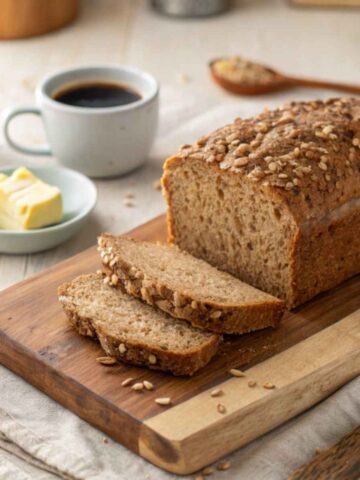
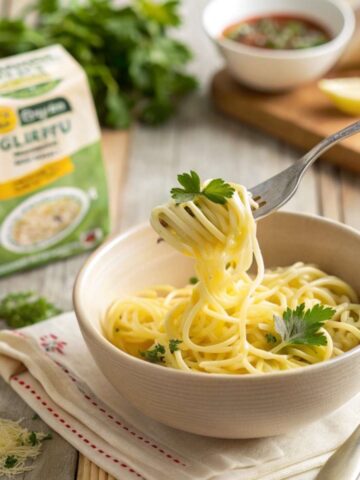
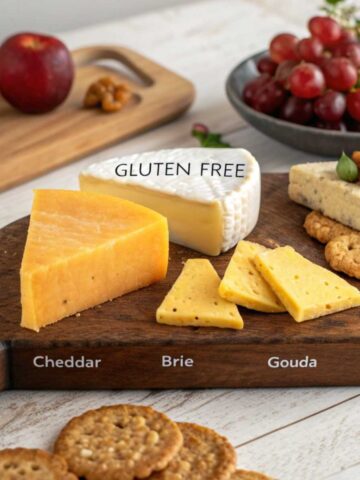
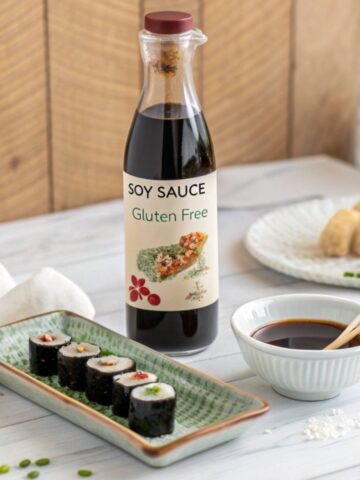
Leave a Reply